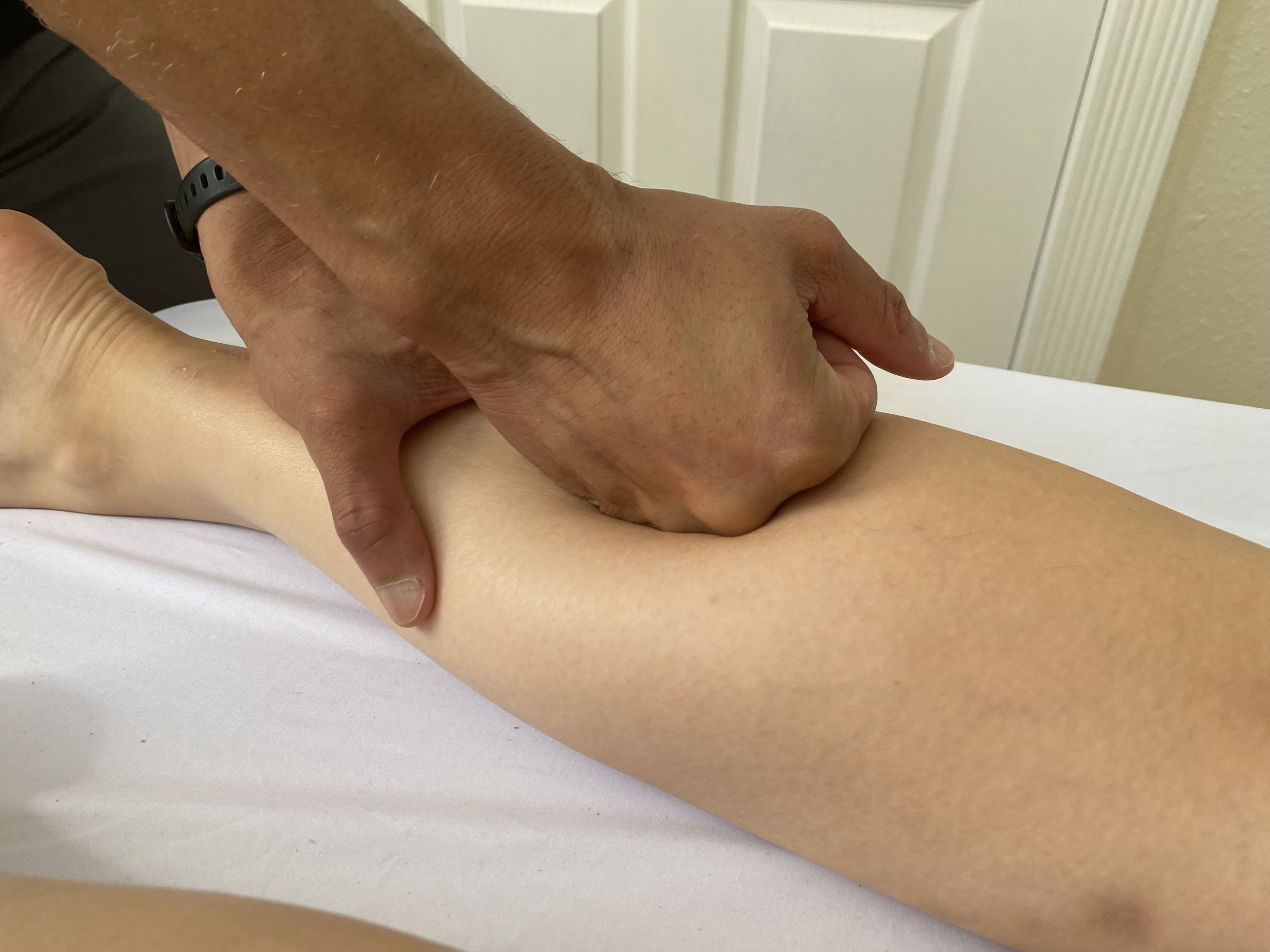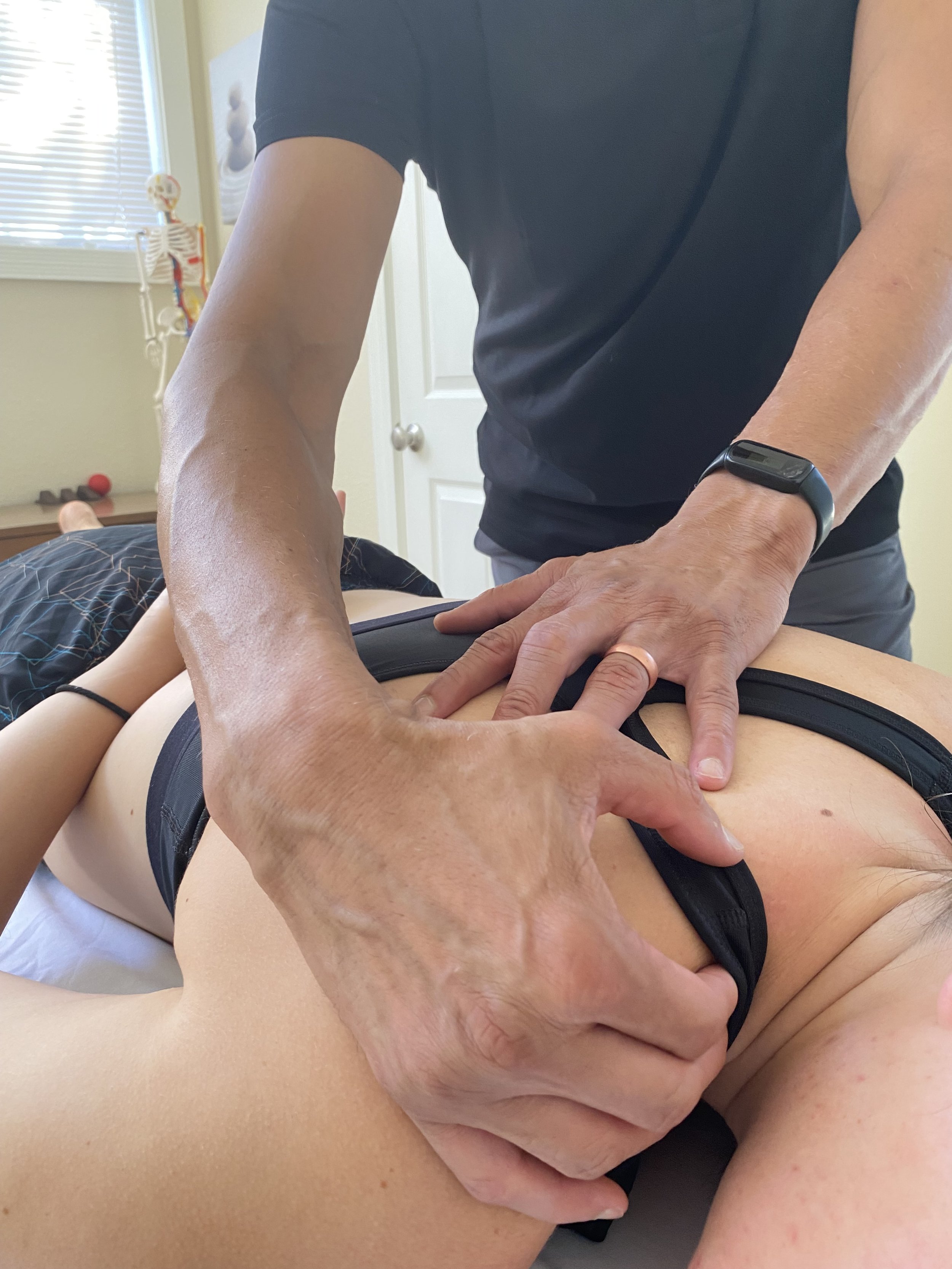Many people who seek out a Rolfer have had no success in treating their pain using other practices. One of the reasons is because many practices try to treat the pain at its location. Rolfing being a wholistic practice, looks at the whole human when treating the pain. An example could be the person experiencing knee pain, but the cause is an unstable ankle joint, or a frozen hip joint.
When you watch a child or a young person moving, there seems to be a fluidity and resilience in their bodies that is frankly beautiful. Somewhere along the way as they age they might injure themselves, say an ankle injury or a broken bone. They spend the time recovering by protecting that limb and putting the weight on other parts of the body. Long after the injury has healed they will still affect the same protective patterns. These habitual patterns cause strain and chronic pain in other totally unrelated areas of the body.
Our bodies grow, move, and change within the constant field of gravity; when we oppose gravity inefficiently, valuable resources are wasted. Physical injuries, trauma, and the stresses of daily life require us to adapt how we move and hold ourselves upright. These adaptive patterns can become deeply ingrained—even long after they’ve fulfilled their protective and adaptive functions—to the point that basic movements like sitting, breathing, and walking are more effortful than necessary. Such prolonged effort can contribute to feelings of stiffness, pain, fatigue, and lack of vitality.
Rolfing / Structural Integration can help us learn to “let go” of chronic stress and tension, to stop fighting gravity, and allow it to support us instead. Movement becomes a pleasure, breath comes easier, and “good posture” becomes effortless. We experience efficiency and grace. Many Rolfing clients come to find relief from pain and discomfort. While this describes some general benefits, the Rolfing process is individual and personal, with a wide range of effects and benefits.
Although Rolfing is very effective at treating localized pain, it isn’t the goal of the practice. Traditionally done over ten sessions. The whole body is addressed to improve breathing function, support from the ground, de-rotating the spine and torqued joints. The result is a sense of ease, spaciousness and increased vitality.
The practitioner uses his fingers, hands and forearms to affect the soft tissue of the body - the Fascia. And in collaboration with the client works to re-shape the body, re-aligning it within the gravitational field.
The impression you get when watching a cat move; The poise, vitality and innate athleticism is the goal of a good Rolfing ten series.






-
It all begins with an idea. Maybe you want to launch a business. Maybe you want to turn a hobby into something more. Or maybe you have a creative project to share with the world.
-
It all begins with an idea. Maybe you want to launch a business. Maybe you want to turn a hobby into something more. Or maybe you have a creative project to share with the world.
-
It all begins with an idea. Maybe you want to launch a business. Maybe you want to turn a hobby into something more. Or maybe you have a creative project to share with the world.


